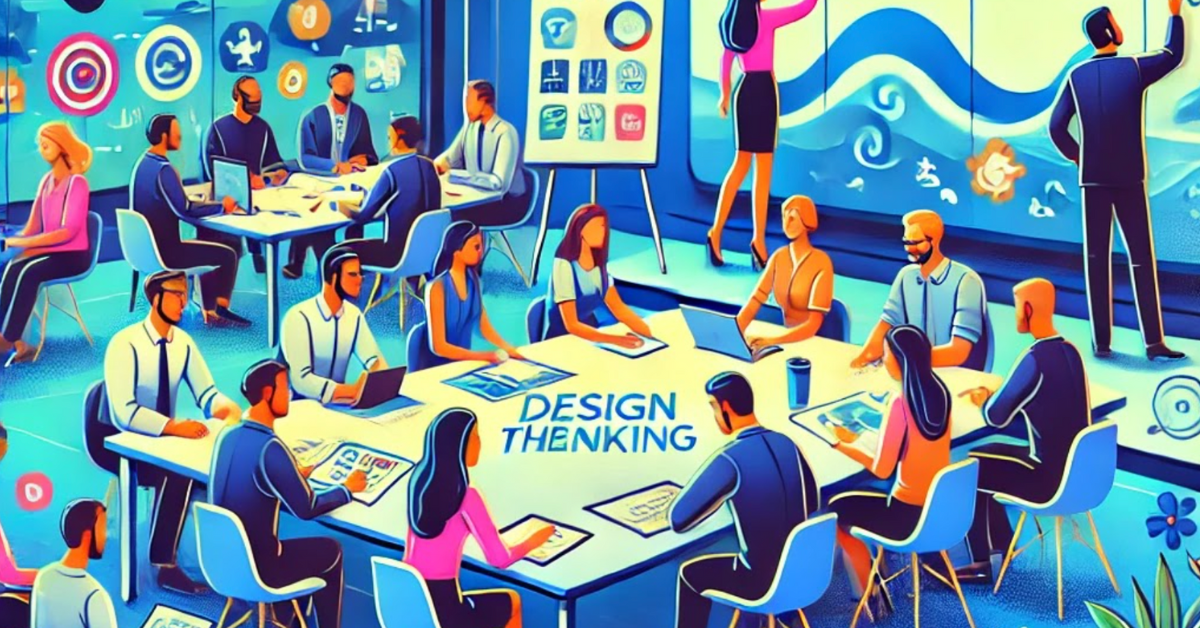
Today’s Morning Buzz is brought to you by Bill Brantley, President and Chief Learning Officer for BAS2A. Connect with Bill on LinkedIn.
- What I’m reading: “The Employee Advantage: How Putting Workers First Helps Business Thrive”
- What I’m watching: Season 5 of “Star Trek: Lower Decks”
- What I’m listening to: The Mysterious Old Radio Listening Society’s podcasts
State and local government employees must innovate within the constraints of limited resources and complex bureaucratic systems to meet public demand. Two effective methodologies can support this effort: Blue Ocean Strategy and design thinking. By applying these concepts, government employees can develop new services that not only meet but surpass citizen expectations.
Understanding Blue Ocean Strategy and Design Thinking
Blue Ocean Strategy, a concept introduced by W. Chan Kim and Renée Mauborgne, involves the creation of new, uncontested market spaces — referred to as “blue oceans” — where competition becomes irrelevant. Rather than contending with rivals in saturated industries (red oceans), organizations focus on innovation to generate new demand and opportunities by presenting unique value propositions.
Design thinking is a human-centered innovation method that combines user needs, technology possibilities, and success criteria. It involves empathizing with users, defining problems, ideating solutions, prototyping, and testing. This iterative process aims to understand the user’s experience to create effective solutions.
Blue Ocean Strategy and design thinking together offer a strong framework for government employees to innovate public services by addressing unmet needs.
5 Strategies for Developing New Government Services
- Identify Unmet Citizen Needs
Using design thinking’s focus on empathy, government employees can identify citizens’ hidden needs. This involves engaging with diverse communities, conducting interviews, and observing service interactions. Understanding these needs can lead to new services that fill current gaps.
- Consider Existing Problems from Different Perspectives to Identify New Solutions
Applying Blue Ocean Strategy, employees can challenge traditional assumptions about public services. By reframing problems and questioning the status quo, they can identify areas where the government can eliminate, reduce, raise, or create aspects of services, leading to innovative solutions that redefine citizen experiences.
- Utilize Cross-Departmental Collaboration
Government agency silos hinder innovation. Collaboration across departments lets employees pool resources and expertise to create comprehensive services. Design thinking promotes multidisciplinary teams, fostering creative solutions that isolated groups can’t achieve.
- Involve Citizens in Co-Creation
Engaging citizens in service design helps align new services with their needs. Workshops, surveys, and interactive platforms allow governments to leverage community insights, leading to more effective and accepted services.
- Leverage Technology and Data Analytics
Government employees can use technology and data analytics to spot trends for service innovation. Design thinking promotes rapid prototyping with digital tools, while Blue Ocean Strategy encourages exploring new tech for unique value.
Hypothetical Case Study: Engaging Citizens in Co-Creation
Let’s explore how engaging citizens in co-creation can be practically applied.
In the city of Springfield, government officials observed increasing concerns regarding mental health and wellbeing among residents. Traditional services were disjointed, making it difficult for citizens to locate appropriate resources.
Empathize and Define
A team of government employees used design thinking to hold community sessions and identify residents’ challenges. They found that resources were dispersed, and citizens wanted a centralized platform for mental health support.
Ideate
The team held workshops with citizens and developed a standout idea: a Community Wellbeing Portal that combines all mental health services, support groups, and self-help resources into one online platform.
Prototype and Test
They created a portal prototype with easy navigation, personalized content, and links to local support networks. Residents tested it and gave feedback on usability and relevance.
Implementing Blue Ocean Strategy
Seeing a gap in the region, the team created a unique service. They worked with non-profits, healthcare providers, and tech partners to improve the portal.
Launch and Impact
The Community Wellbeing Portal was launched with community support. It improved access to mental health resources and promoted community engagement. The portal also reduced the strain on individual services by providing preventative resources and streamlined access to support.
Outcomes
- Easy Access: Residents can quickly find mental health resources.
- Community Engagement: Co-creation empowered citizens and boosted trust in local government.
- Innovation: The portal established a benchmark for service integration, encouraging other departments to adopt comparable methodologies.
By applying Blue Ocean Strategy and design thinking, state and local government employees can improve public services to better address the changing needs of citizens. These methods include understanding unmet needs, redefining problems, encouraging collaboration, involving citizens, and utilizing technology, providing practical ways to innovate. The hypothetical case of Springfield’s Community Wellbeing Portal demonstrates how citizen engagement in co-creation can result in effective and sustainable services. Adopting these approaches can help governments adapt to change and advance service innovation.
